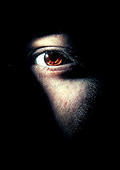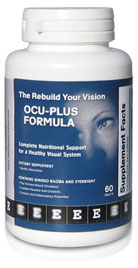|
Black Eye is Sometimes
|
| |
|
|
|
|
| |
 |
 |
A black eye, sometimes called a "shiner," is a bruise around the eye.
When an object strikes the eye, the force of the impact breaks delicate blood vessels in the eyelids and surrounding tissues.
Blood collects under the skin, and causes a black or blue discoloration in the eyelids and around the eye socket.
Because the skin around the eye is relatively thin and transparent compared to skin in other parts of the body, the black and blue color of a bruised eye may seem darker and more intense than bruises elsewhere.
Although many people associate black eyes with fighting and violence, only about 15% of eye injuries are caused by violent assaults.
Most shiners happen by accident — during contact sports, at work, in a car crash or during home repair.
Men get about four times more eye injuries than women do, and the average patient is approximately 30 years old.
The source of the injury is usually a blunt object — a baseball, a hammer, a rock or a piece of lumber — and the most frequent place of injury is the home.
At one time, it was also common for eye injuries to occur in motor vehicle accidents, usually when a victim's face struck the dashboard.
However, the number of eye injuries caused by car crashes has decreased significantly because of airbags and the mandatory use of seat belts.
Almost 2.5 million traumatic eye injuries occur each year in the United States.
Most of these are superficial injuries that don't cause any permanent damage to the eye or to the tissues around it.
When vision changes after a blow to the eye, it is a warning sign that the injury may be more than a simple bruise.
The force of the blow may have fractured the delicate bones that form the eye socket, or the structure of the eye itself may be damaged.
| |
 |
 |
|
|
 |
|
|
Symptoms
A black-eye causes swelling and black-and-blue discoloration of the eyelids and soft tissues around the eye.
Diagnosis
You usually can diagnose a black eye yourself based on your symptoms and whether your eye was struck.
Duration
Most of the swelling and discoloration go away within seven to 10 days after injury.
The color of the skin around the eye will change over the course of recovery, typically showing green and yellow tones as the blood ages and is cleared from the tissue.
Prevention
Almost all eye injuries can be prevented.
To decrease your risk of eye injuries:
- Use appropriate protective eye wear at work.
- If you are an athlete, ask an experienced ophthalmologist, optometrist or optician for help in selecting protective eye wear that is appropriate for your sport.
- Always "buckle up" when you ride in a car.
- For youth who play baseball, eye injuries can be reduced by using face masks and safety balls, which are balls that cause less injury when they strike a person.
If you have a black eye, apply cold compresses (such as an ice bag or cool, damp cloth) to the injured eye for at least 15 minutes immediately after your injury to help reduce pain, swelling and discoloration.
An uncomplicated black eye heals without complications.

Subscribe to EyeSight Vision Care! , our monthly newsletter with in depth information to help you keep up to date on how to Protect Your Eyesight with a free bonus. Fill out the form below. You'll then receive an email asking you to confirm that you subscribed. You'll always have the option to unsubscribe at the click of your mouse.
Black Eye to Eye Diseases
Black Eye to Protect Your Eyesight
More Information









